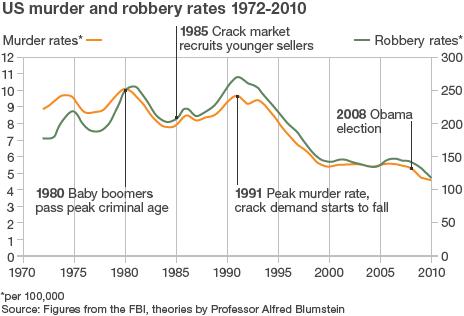Does a US child go missing every 90 seconds?
- Published

When there's a news report of a child going missing it's easy to jump to the worst conclusions, but sometimes the reality is not quite so alarming. It's a similar story with one widely used statistic about missing children in the US - it is not quite what it may seem.
A television news channel in Washington DC recently launched a safety awareness campaign, external using the hashtag #every90seconds, claiming that one child goes missing in the US, on average, every one-and-a-half minutes.
It's a figure that's been widely quoted in US media over the past few years, often for the best of reasons, as in this case. It sounds worrying, because you might reasonably assume it refers to kidnappings, or children in real danger.
But where does the 90-second figure come from?
It's based on a 2002 study funded by the US Department of Justice, external. This examined data for 1999 from a range of sources, including police reports, and interviews with parents and children, and found 797,500 children were reported missing across the country. There hasn't been another major study since then.
In 1999 there were about 72 million under-18s in the US, so that amounts to one in 90 reported missing in a single year - quite a startling figure.
What exactly does the study mean when it says a child is "missing" though?
"The missing child concept is widely misunderstood," says Prof David Finkelhor, who co-authored the study, and is director of the Crimes Against Children Research Center at the University of New Hampshire.
There are lots of reasons why a child may go missing - they may have run away, or failed to come home on time - and cases like this may be worrying, but they are very different from the case of a child being kidnapped by a stranger in the street.
"The number of kids who are actually kidnapped by strangers is quite small," says Finkelhor.
Just 115 of the 797,500 children were subject to what Finkelhor and his co-authors define as a "stereotypical" kidnapping - that is, they were abducted by a stranger and detained overnight, perhaps permanently, or taken at least 50 miles away.
In fact, almost half the children recorded in the study were what the authors call "benign missing". That means their parent or guardian thought they were missing, but they soon turned up.
So many of the children reported missing weren't really missing at all.
Furthermore, there is evidence to suggest that the size of the problem has diminished in the 13 years since Finkelhor's study was published - though of course, it still exists and still causes suffering for those affected.
In 2014, the FBI received about 600,000 reports of people going missing, the majority of whom were under 18. But this figure has been decreasing since 1997, when nearly one million missing-person reports were received.
Finkelhor says technology has made life safer for children.
"The biggest change has been the acquisition of cell phones, which allows parents and children to stay in touch with one another. So for example 'benign missing' episodes are likely to have declined a great deal because parents can call and find out what's happening," he says.
He is currently carrying out research for an updated study, due out later this year. But for now he will only say that the numbers on children going missing reflect a well-documented decrease in overall levels of criminal activity in the US.
"In the United States, crime has declined tremendously. Crimes against children are down, sexual assaults are down, homicides are down. So it's very likely that some of these [missing children] episodes that are motivated by criminal intent are also down as well."

More from the Magazine

Through booms and busts, and through Democratic and Republican administrations, crime has been falling since 1991. Why?
US crime figures: Why the drop?
Listen to More or Less on BBC Radio 4 and the World Service, or download the free podcast.
Subscribe to the BBC News Magazine's email newsletter to get articles sent to your inbox.